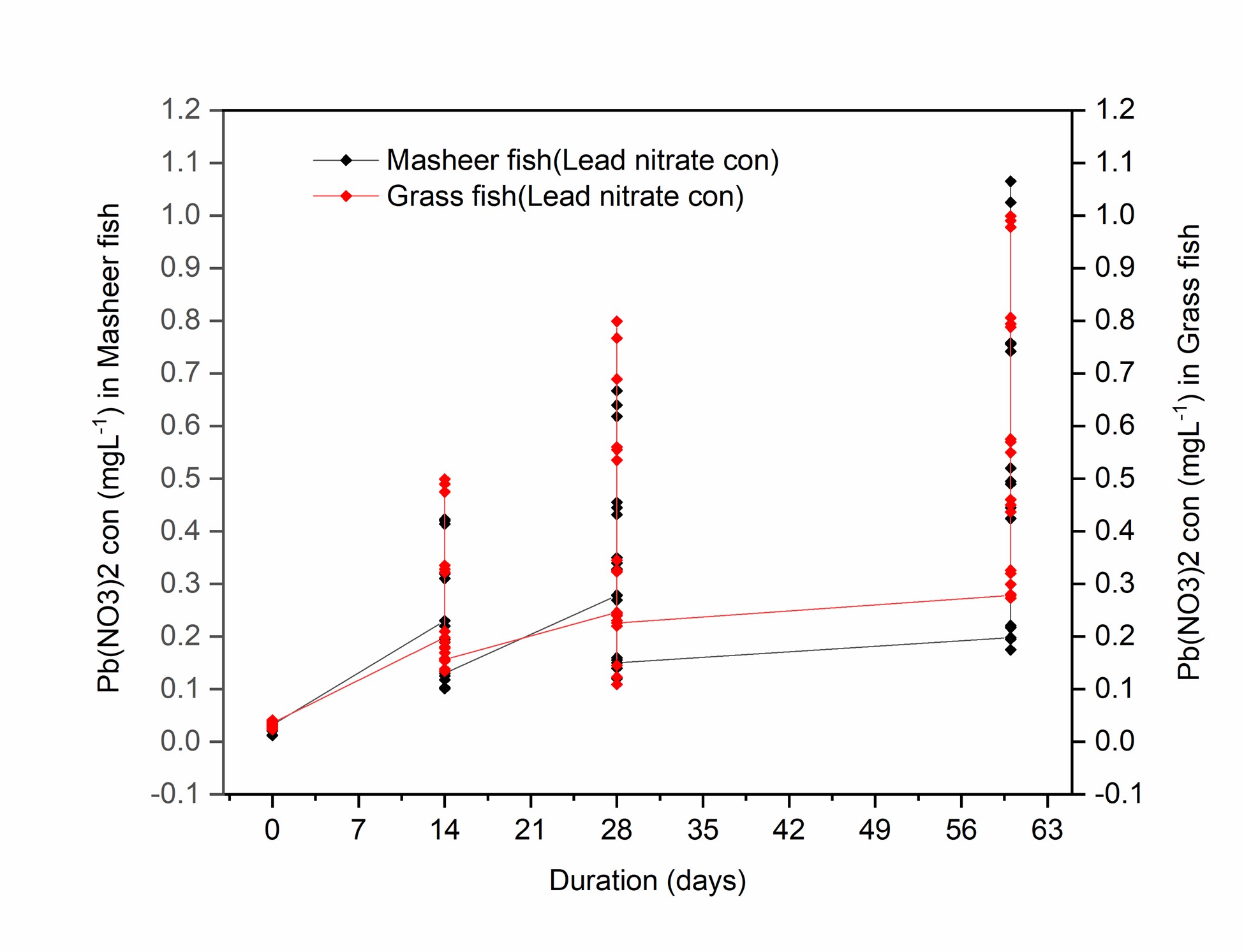Abstract
Bioaccumulation of toxic heavy metals in the human body can give rise to adverse health effects, the severity of which depends upon their dosage and duration of exposure. In this study, yearlings of two different species of edible fish, i.e., Tor putitora (Mahseer) and Ctenopharyngodon Idella (grass carp), were exposed to different concentrations of lead nitrate in a controlled environment of aquarium for three different lengths of duration (14, 28, and 60 days). The bioaccumulation of lead in different organs, including gills, skin, muscles, liver, intestine, and swim bladder of the fish, was assessed using atomic absorption spectrometry. Generally, the highest lead concentration was observed in the gills and lowest in the muscles for both species at each experimental dosage and duration. In 14-days exposure, the relative pattern of bioaccumulation in different organs was observed as gill > liver > skin > intestine > swim bladder > muscle for both fish species. Similarly, the pattern of bioaccumulation observed in 28-days exposure was as: gill > liver > intestine > skin > swim bladder > muscle in both species. Whereas, pattern in 60-days exposure was observed as gill > liver > intestine > swim bladder > muscle > skin. The data shows that grass carp had stored higher concentrations of lead than Mahseer, which may be attributed to the fact that they are omnivorous. Furthermore, the lowest bioaccumulation was recorded in the muscles until the 56th day of the exposure, after which the concentration steadily increased in the muscles. The observed pattern highlights the importance of exposure’s duration to lead; chronic exposure could result in its bioaccumulation at toxic concentrations in the muscles, which is particularly of concern because the fish muscles are heavily consumed as food worldwide.
Keywords:
heavy metal accumulation in water; lead bioaccumulation of heavy metals in fish; Ctenopharyngodon idella; Tor putitora; lead toxicity

 Thumbnail
Thumbnail
